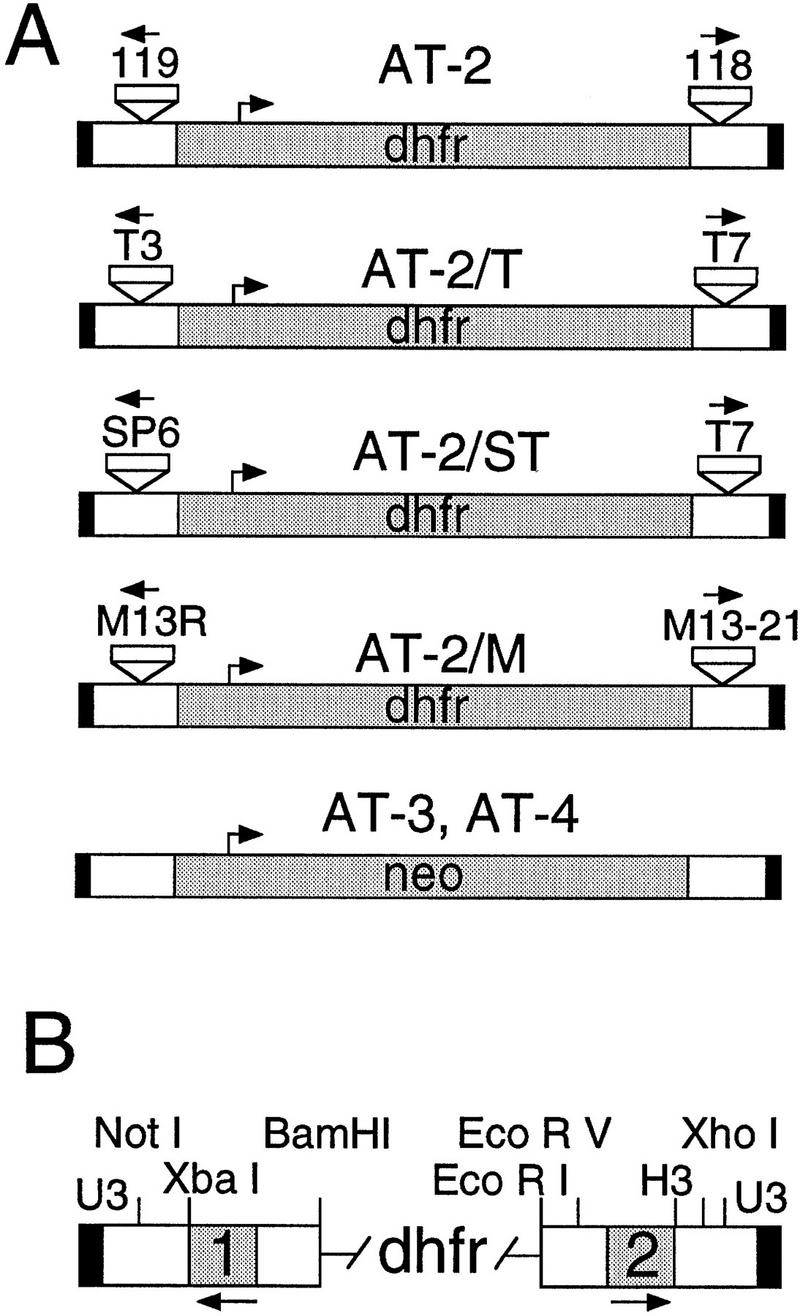Figure 1.

Artificial transposons for automated sequencing. (A) The artificial transposon AT-2 and several AT-2 derivatives are shown. The new priming sites are indicated near the termini as small boxes with arrows facing outward. AT-2 has sites for the 118 and 119 primers; AT-2/T has sites for the T3 and T7 primers; AT-2/ST has sites for the SP6 and T7 primers; AT-2/M has sites for the M13 -20 and R primers. AT-3 and AT-4, which carry the neo gene for use with kanamycin selection, are also shown. (B) An expanded view of the transposon termini. The dhfr gene that is used as the selectable marker and separates the two termini is indicated. The black box indicates the 4-bp U3 terminal Ty1 sequence; the white boxes indicate the regions carrying multiple restriction sites for mapping; and the shaded boxes labeled 1 and 2 indicate the locations of the inserted primer sites. Integration reactions with AT-2, AT-2/T, AT-2/M, and AT-2/ST generated ∼1 × 103 to 1 × 104 recombinants per reaction, whereas AT-3 and AT-4 generated 1 × 102 to 1 × 103 recombinants per reaction.
